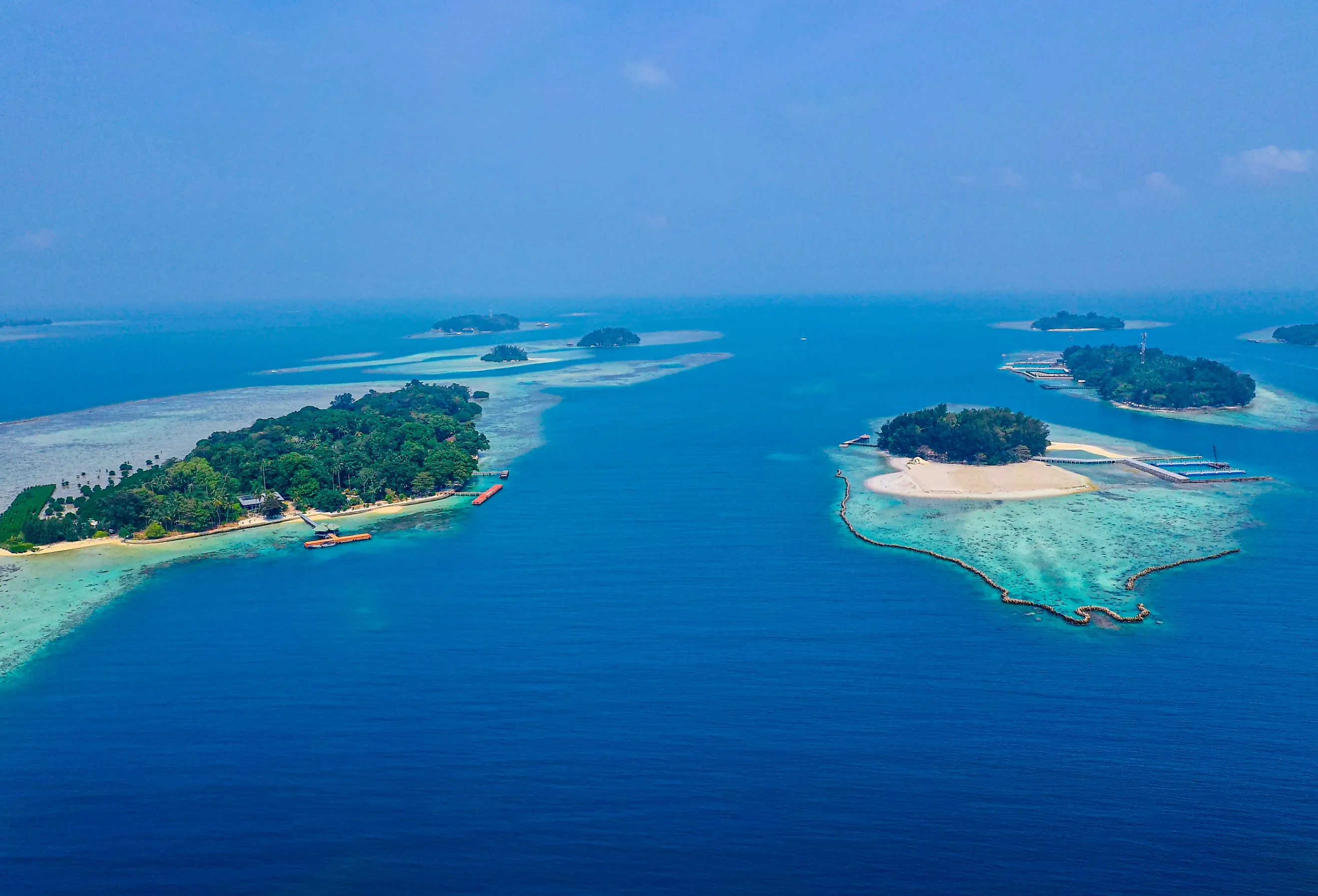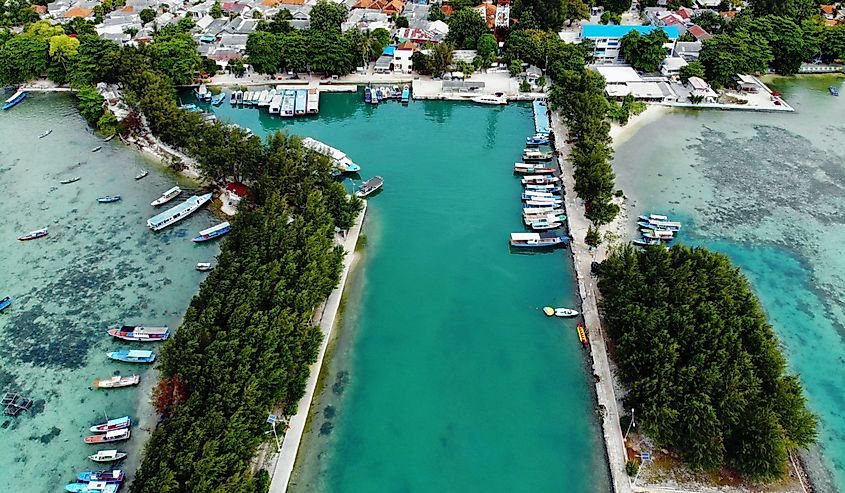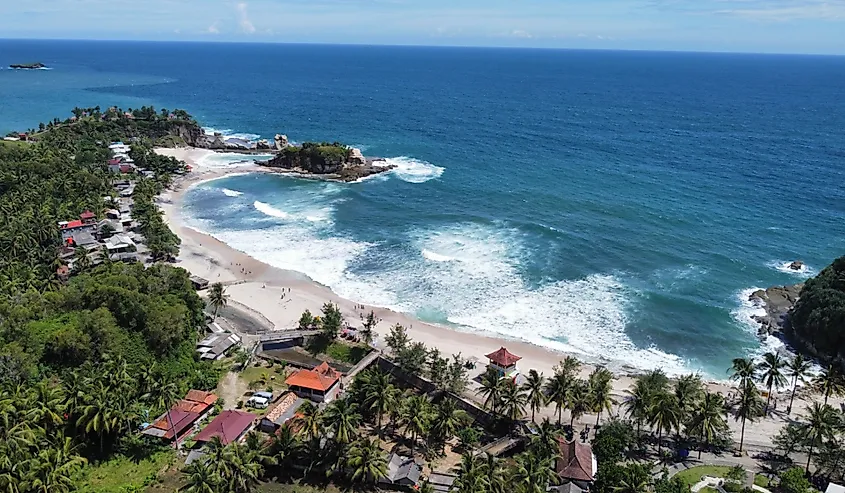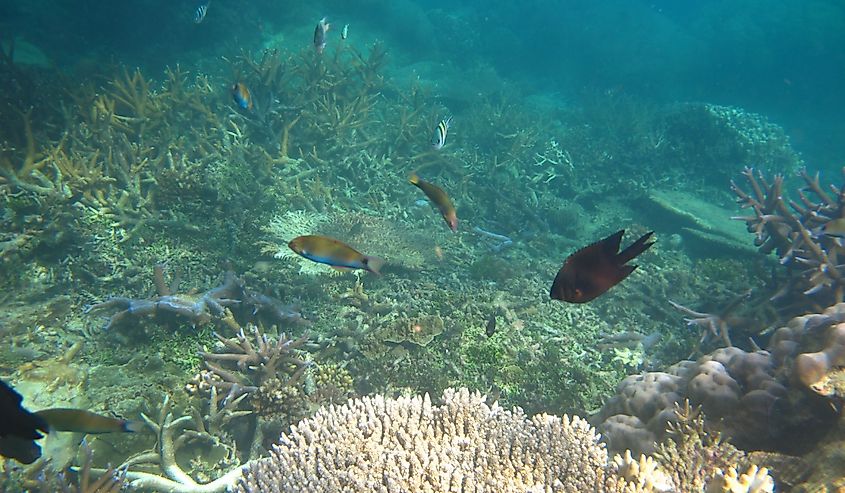
Java Sea
The Java Sea (Indonesian: Laut Jawa, Javanese: Segara Jawa) is an extension of the Western Pacific Ocean, in the Oceania region. Surrounded by the masses of Indonesia, this resource-rich, shallow body of water formed at the end of the last ice age, and is now a vital asset for the archipelago nation. It is home to a wealth of marine life, as well as petroleum and natural gas deposits that are instrumental to Indonesia's export economy. During World War II, this sizable waterway was the site of one of the most significant naval battles. Here, the Allied forces of the Netherlands, Britain, Australia, and the United States sustained heavy losses in a futile attempt to prevent the Japanese fleet from invading the island of Java.
Geography And Climate Of The Java Sea

The Java Sea is sandwiched between the Indonesian/Greater Sunda Islands of Borneo (to the North) and Java (to the South), on which the capital and one of the largest cities in Asia, Jakarta, resides. The island of Sulawesi marks the Eastern boundary, South of which the Java Sea transitions to the Bali Sea and Flores Sea, while the island of Sumatra caps the Western boundary. To the Northeast, the Makassar Strait bridges the gap to the Celebes Sea, and to the Northwest, the Karimata Strait connects these waters to the highly-trafficked South China Sea. The smaller islands of Bangka and Belitung also float in the sea's Northwestern region.
The Southern section of the Sundra Shelf (an extension of the Mainland Southeast Asia continental shelf) makes up the remarkably flat floor of the Java Sea. It is considered a shallow sea, as the average depth is only 46 meters (151 feet). The total surface area of the Java Sea is about 320,000 square kilometers (120,000 square miles)—measuring approximately 380 kilometers (240 miles) from North-South, and 1,600 kilometers (990 miles) East-West.
The Java Sea experiences a typical monsoon climate. During the North-West monsoon (November to March), the sea experiences an Eastward current, while during the South-East monsoon (April to October), the waters switch to a Westward flow. The climate on the island of Java is predominantly hot and humid throughout the year.
A Brief History Of The Java Sea

The floor of the Java Sea was once dry land, but was submerged when sea levels rose towards the end of the most recent major glacial period—an event that marked the end of the Pleistocene epoch (2.6 million years ago to 11,700 years ago).
The first known hominid ancestors to inhabit the modern day Indonesia/Java Sea region was a branch of Homo erectus. Evidence of "Java Man," as they were appropriately dubbed by researchers, dates back approximately half a million years. Homo sapiens arrived on the scene (Indonesia, New Guinea, and Australia) close to 45,000 years ago. Then, around 2,000 BC, the Austronesian people, who are the direct relatives to the majority of the Indonesian population, made their home in what would have much more closely resembled the modern-day landscape (only without the mega cities).
Fertile soils allowed the early settlers to prosper, and by the 8th century BC, develop rice farms that further catalyzed the expansion of societies, which was thriving by the first century of the new millennium. As trade developed with India (via the Malacca Strait that connects the Java Sea with the Bay of Bengal), Islam spread rapidly throughout modern-day Indonesia, with the exception of in Java, where Hinduism took off instead. This is due to the Majapahit Empire (the last of the Hindu-Javanese kingdoms) reaching its peak around the 14th century AD, before Islam completely took hold. To this day, Indonesia is the largest Islamic nation in the world.
After a long period of European trade, but also Dutch colonialism (centered out of present-day Jakarta), the island of Java was invaded by the Japanese navy on February 27th, 1942, after a devastating seven-hour contest with Allied forces known as the Battle of the Java Sea. Japan controlled the territory until August 19th, 1945, when they granted independence to the nation of Indonesia.
In recent years, the Java Sea has been the watery grave of two major airplane crashes. The first occurred on December 28th, 2014, when an Indonesia AirAsia flight crashed while en route to Singapore, killing all 162 passengers. Then, on October 29th, 2018, a Lion Air Flight carrying 189 passengers heading towards the Bangka-Belitung Islands went down without any survivors.
The Economy Of The Java Sea

Nowadays, the Java Sea promises economic opportunities in the arena of natural resource extraction and export (namely, petroleum and natural gas). Fishing is another primary economic pillar provided by the Java Sea for the people of Indonesia. Furthermore, because of the biological diversity (over 3,000 species of marine life) and history of ship and plane wrecks, scuba diving brings in a notable collection of annual tourists. And finally, once again because of the area's vast array of flora and fauna, as well as visually stunning environments, a number of national parks, such as Karimunjawa, Bromo Tengger Semeru, and Kepulauan Seribu, also draw crowds of local and international origin.
Indonesia's Java Sea arose from the forces of a naturally changing climate and now marks the central watery core of the nation's massive archipelago. This sizable body of water has witnessed many eras of human occupation, conflict, triumphs, and development, and lately the region has been enjoying a period of relative peace. Wildlife flourishes in the shallow salt waters, and the people on the surrounding shores are blessed by the economic opportunities made available by the sea.











